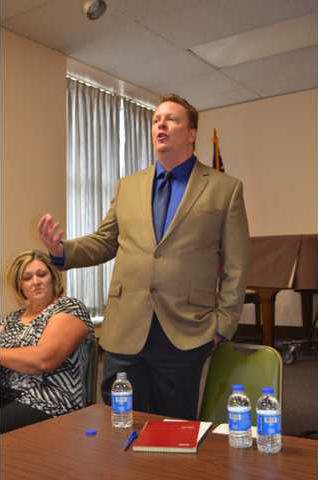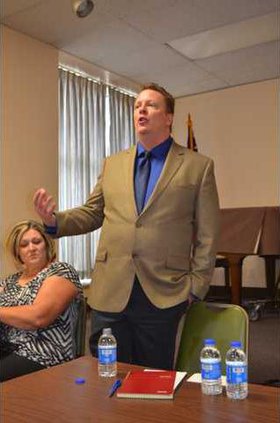By JIM MISUNAS
jmisunas@gbtribune.com
LARNED — The directors for re-integration of Sexual Predator Treatment Program residents from Larned State Hospital at Parsons State Hospital and Osawatomie State Hospital testified there are safeguards in place to protect the public.
Larned State Hospital is scheduled to re-integrate SPTP residents into the local population starting in January, 2016 .
Several local citizens stated Sept. 11 during a public meeting that they are anxious that long-time residents who have been part of the Sexual Predator Treatment Program (SPTP) at Larned State Hospital will be transitional residents of Larned and Pawnee County.
SPTP, housed at LSH, is designed to provide a secure environment to protect the public from sexually violent predators housed at SPTP and provide treatment to those individuals who have been civilly committed by the courts to SPTP. Residents who are on schedule for re-integration are typically enrolled in the SPTP program for 10 to 20 years.
The transitional services directors at Parsons State Hospital and Osawatomie State Hospital assured local residents Sept. 11 that safety is their highest priority, and that residents who have graduated to Step 6 or Step 7 of the program have passed several safety hurdles to reach that point.
The directors stated that residents in the transitional phase are closely monitored, from regular surveillance to tracking residents and verifying mileage log entries from home to work.
Directors of the programs at Parsons State Hospital and Oswatomie State Hospital said the re-integration process have worked well in their communities.
Stacey Clark, Parsons State Hospital transitional services director, said residents must pass three steps, which include registering as a sex offender in their local community, acquiring a Kansas ID, passing polygraph tests and finding employment, transportation and housing in the final process.
“They have to pass polygraph test to go onto the next step,” Clark said. “Their mileage, phone records and purchases can be checked. Our surveillance decreases over time, but never goes away.”
Eligibility for transitional release status is dependent on District Court approval. Once a resident is placed on transitional release, they are eligible for housing, which must be located away from schools and day-care facilities.
Deb Smith, Osawatomie State Hospital transitional services director, said it is typical that residents must travel for their work assignments, which generally are limited to manufacturing because they cannot work in any job or reside in any area where children are nearby.
“Most of the people work in manufacturing with a industrial partner that s 40 to 50 miles away,” Smith said. “Every month, we contact the employer to see how they are doing. We make sure they are doing what they are supposed to be doing. We check with their parole officers. There are a loof safeguards in place.”
Employees who will work with residents at the Meyer Building will be mental health developmental disability employees, supervisors and a transitional services director.
Residents who have progressed to Step 6 or Step 7 have been routed to Parsons and Osawatomie, which have reached their capacity.
Larned State Hospital will begin to be a site of the final process of re-integration Jan. 2016 at the Meyer East Building, which is adding additional cameras and employees. Up to 16 residents could be accommodated at LSH. Two SPTP residents are currently prepared for their transitional phase.
Michael Dixon, chief forensic psychologist for SPTP, said a review panel will meet in November and determine how many residents will be placed in the transitional program at the Meyer East building. Dixon said the review panel meets at least four times a year and when needed by conference call.
Directors report safety is top priority




